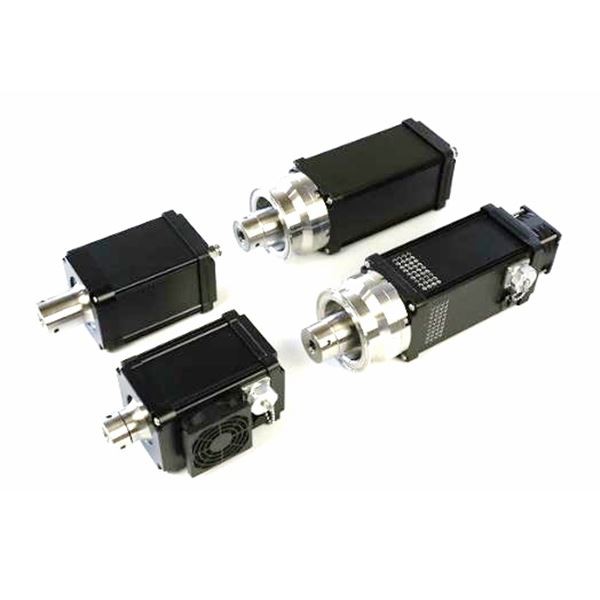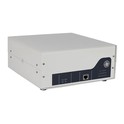Hey there! As a supplier of ultrasonic transducers, I often get asked, "When should I use a high - frequency ultrasonic transducer?" Well, let's dive right into it and explore the scenarios where these nifty devices really shine.
First off, what exactly is a high - frequency ultrasonic transducer? In simple terms, it's a device that converts electrical energy into ultrasonic waves at a high frequency. Usually, frequencies above 20 MHz are considered high - frequency in the ultrasonic world.
One of the most common applications where high - frequency ultrasonic transducers are a must - have is in medical imaging. In the medical field, precision is key. High - frequency transducers can produce images with extremely high resolution. For example, when it comes to imaging small and delicate structures like the eye or the thyroid gland, low - frequency transducers just won't cut it. The high - frequency waves can penetrate these small areas and provide detailed images that help doctors diagnose conditions accurately. Whether it's detecting tumors in the early stages or examining the blood flow in tiny vessels, high - frequency ultrasonic transducers are like a super - powered magnifying glass for medical professionals. You can learn more about general Ultrasonic Transducer technology on our website.
Another area where high - frequency ultrasonic transducers are widely used is in non - destructive testing (NDT). In industries such as aerospace, automotive, and manufacturing, it's crucial to check the integrity of materials without causing any damage. High - frequency transducers can detect small flaws, cracks, or inclusions in materials like metals, composites, and plastics. For instance, in the aerospace industry, the safety of an aircraft depends on the quality of its components. High - frequency ultrasonic testing can identify even the tiniest defects in engine parts or wing structures, ensuring that these critical components are safe to use.
Microelectronics is yet another field that benefits greatly from high - frequency ultrasonic transducers. As electronic devices become smaller and more complex, the need for precise inspection and testing has increased. High - frequency transducers can be used to inspect the bonding between different layers in integrated circuits, detect voids in solder joints, and measure the thickness of thin films. This helps in ensuring the reliability and performance of electronic devices, which is especially important in today's technology - driven world.
In the field of materials research, high - frequency ultrasonic transducers play a vital role. Scientists use these transducers to study the properties of materials at a microscopic level. By sending high - frequency ultrasonic waves through a material and analyzing the way they are reflected or transmitted, researchers can gain insights into the material's structure, elasticity, and other physical properties. This information is valuable for developing new materials with improved performance and characteristics.
Now, let's talk about some of the factors you need to consider when deciding whether to use a high - frequency ultrasonic transducer. One of the main factors is the depth of penetration. High - frequency waves have a shorter wavelength, which means they can't penetrate as deeply as low - frequency waves. So, if you need to inspect a thick material, a high - frequency transducer might not be the best choice. On the other hand, if you're dealing with a thin or small - scale object, the high resolution provided by a high - frequency transducer can be a game - changer.
The type of material you're working with also matters. Different materials have different acoustic properties, which can affect the performance of the transducer. For example, some materials may absorb or scatter high - frequency ultrasonic waves more than others. You need to choose a transducer that is compatible with the material you're testing to get accurate results.
Cost is another important consideration. High - frequency ultrasonic transducers are generally more expensive than low - frequency ones. This is because they require more advanced technology and precision manufacturing. So, you need to weigh the benefits of using a high - frequency transducer against the cost, especially if you're on a tight budget.
In conclusion, high - frequency ultrasonic transducers are incredibly useful in a variety of applications, from medical imaging to non - destructive testing and materials research. However, they're not a one - size - fits - all solution. You need to carefully consider the requirements of your specific application, such as the depth of penetration, the type of material, and the cost, before deciding whether to use a high - frequency transducer.

If you're in the market for high - quality ultrasonic transducers, whether it's a high - frequency one or something else, we're here to help. We've got a wide range of products to suit different needs and budgets. Our team of experts can also provide you with personalized advice and support to ensure you make the right choice for your application. So, if you're interested in learning more or starting a purchase negotiation, don't hesitate to reach out to us.
References
- "Ultrasonic Testing: Principles and Applications" by some well - known NDT experts.
- "Medical Ultrasonography: A Practical Guide" for medical - related ultrasonic knowledge.
- Industry reports on non - destructive testing and microelectronics inspection.





